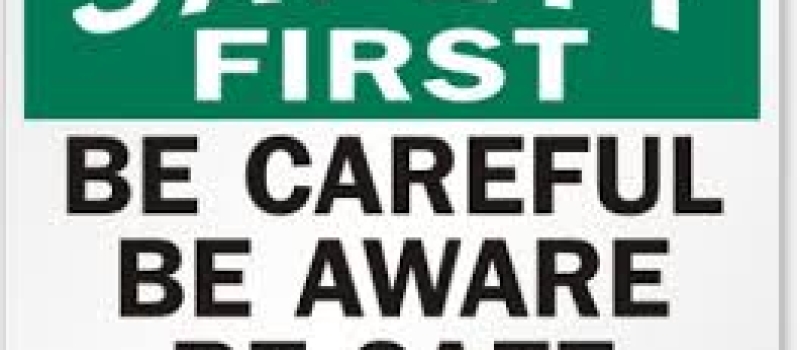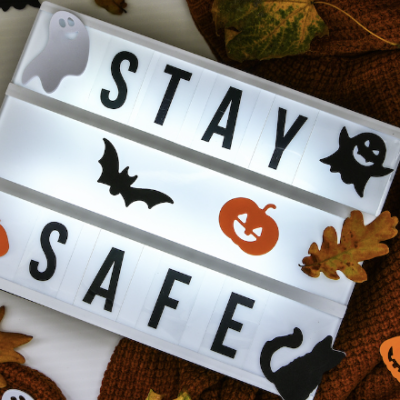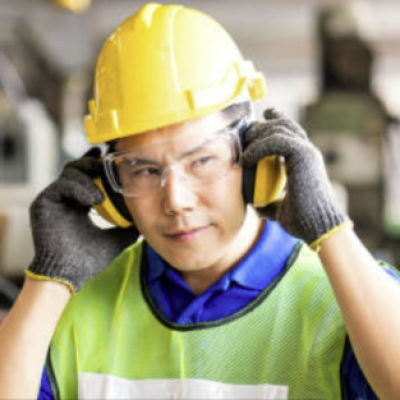Your Personal Safety
Tuesday, June 21, 2022 Murray Tate

Do you spend any time every day thinking about your personal safety? The absolute worst time to think up a response to a sudden safety/emergency event is during the event. Some time spent ahead of time coming up with plans/responses to possible problems allows you to follow that plan instead of spending time trying to think of what to do.
Consider what types of emergencies can happen in your life. This depends on your location, your lifestyle, and where you travel. When I lived in Kentucky, we had plans for tornado response. When I lived near the gulf coast in Texas, we were concerned about hurricanes. When I lived near Buffalo, winter blizzards were a concern. Where I now live, in rural West Virginia, coyotes seem to be my biggest problem – I have plans for dealing with them.
Make a list of the types of emergencies that could occur in your life. Examples (based on list at Ready.gov website) are:
|
Attacks in Public Places |
Flood |
Pandemic |
|
Avalanche |
Hazardous Materials Incident |
Power Outage |
|
Chemical Emergencies |
Home Break-in |
Severe Weather |
|
Cybersecurity |
Home Fire |
Thunderstorms & Lightning |
|
Drought |
Household Chemical Emergencies |
Tornado |
|
Earthquake |
Hurricane |
Wildfire |
|
Explosion |
Landslides & Debris Flow |
Winter Weather |
|
Extreme Heat |
Nuclear Power Plant |
|
A plan for each of these possibilities does not necessarily have to be lengthy to be useful. For example, for most of us with home computers, a plan for dealing with cybersecurity can be as simple as the installation of an anti-virus program on our home computer. Examples for response plans are available at websites such as Ready.gov, American Red Cross, FEMA, and the Center for Disease Control. Some of these are good starting places to work up your own personalized plan.
For those plans based on a home issue, we need to consider the residents of our home. Small children, the elderly, and pets all have different needs. I can set my house up such that children, the elderly, and pets can get out quickly or be taken out quickly, if need be or take shelter if need be. If someone in my household has severe special needs, I can visit the local Fire Department to discuss this with them. Most Fire Departments now keep a listing of homes with special needs residents so they can best help in an emergency.
For issues at work, I have to deal with the site situation as it is. But at work or a store or restaurant, I can be aware of exits and fire extinguisher locations. At work, I can decide what my escape route would be, or how to barricade an area if an active shooter situation arises, or where I can hide, or what items near me or on me could be used as weapons if I must engage the shooter in order to defend myself.
In my life, I have noticed that almost no one considers hazardous materials incidents. But if you live anywhere near a major roadway or train track, you have hazardous materials travelling near you routinely. In case of a spill, local authorities may call for a Shelter-in-Place for everyone. This is called when an airborne material makes it safer inside a building than outside trying to flee the area. You stay in your home or place of employment, close all windows, and turn off the HVAC (the HVAC draws in some amount of outside air). In spite of being much safer inside than outside, we routinely have people get hurt when ignore the Shelter-in-Place order and they get in their car to leave. This results in them breathing the hazardous material during their escape when they could have stayed in place and breathed clean air.
Another easy part of emergency preparation is to download apps on your smart phone that alert you to emergencies in your area. The Red Cross has a set of apps that track emergency situations and give you a warning in one occurs in your location. These are specific to: earthquake, flood, hurricane, tornado, and wild fires. They also have apps that can assist you with First Aid and Pet First Aid. The apps are free to download.
The biggest part of helping your personal safety is your mindset. By this, I mean keeping in mind your surroundings and what is going on around you. Stay alert. I read articles about people walking down the sidewalk, staring at their phones, and walking out into traffic or into poles or into fountains. There are videos online showing people doing this. More and more cities are enacting laws making it illegal to stare at your phone while walking in public. Early data I’ve seen shows that people talking on their hand-held phone while driving, crash at rates higher than drunk drivers. Is that message you’re reading or phone call really worth your life or the life of the one you hit? This is a mindset issue – not thinking out the entire situation.
Walkers and joggers playing loud music through earphones may not be able to hear a car horn or someone yelling a warning to them. When I worked at a major university, we had a student get killed when he walked along staring at the ground, not forward, had music blaring through his earphones, crossed the railroad tracks, and walked right in front of a train in broad daylight with three dozen people screaming at him and the train horn blaring. Again, a mindset issue.
The simplest thing you can do to increase your odds of survival in an emergency is to consider what to do in one. This is best done ahead of time. Then stay aware of what is going on around you. Please.




